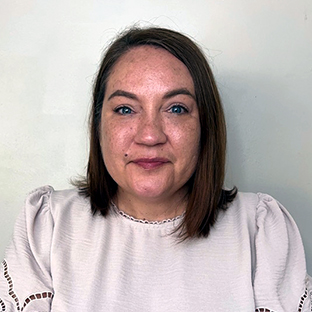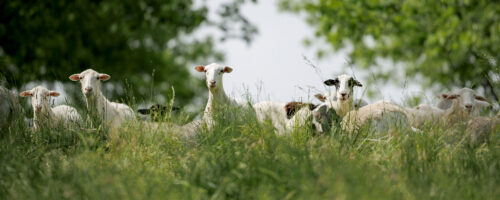Q&A with Scotty Herriman
Scotty and Jo Herriman not only restored their land but also earned them numerous accolades, most recently, the 2024 Oklahoma Leopold Conservation Award.
When the rain began that night in June 2007 and didn’t stop for days, Scotty and Jo Herriman feared for the future as the Verdigris River flooded their home and washed away the topsoil they had built up for three decades.
Rebuilding their 2,000-acre farm in northeast Oklahoma took time, resilience and a determination to do even more to preserve their soil. Their work not only restored their land but also earned them numerous accolades, most recently, the 2024 Oklahoma Leopold Conservation Award. The award honors land stewards who go above and beyond in their management of soil health, water resources and wildlife habitat on their working land, inspiring others with their dedication to environmental improvement.
After growing up on a small farm, Herriman embarked on his journey as a producer when he purchased his current farm in the 1970s. Here is our discussion with him about how he and Jo approach soil health and how they survived hard times.
Q: Tell me a bit about what farming your land looked like before the 2007 flood.
A: We were growing crops with full tillage and no herbicides. Grass and weeds in the crop were managed using a tractor and a four-row cultivator. The work was slow and methodical, not to mention boring.
At the time, only a few herbicides for weeds and grass were available, but the impacts were sometimes minimal. Wheat herbicides were all but nonexistent.
Q: What were some of your top concerns in those early years?
A: Along with low commodity prices and high interest rates of the 1980s, the growing issue of soil erosion rose to the top of my concerns. The loss of our precious soil had to be dealt with; as the lifeblood of our crops, it had to be saved at all costs.
Terraces with waterway areas helped combat erosion, and this era brought the use of the chisel plow. These practices were a step forward in our conservation progress aimed at slowing down soil loss.
Q: Do you recall a specific success that you attribute to your conservation efforts?
A: Adopting no-tillage practices into our operation greatly improved our soil and water conservation efforts. The very fact that I would not move soil by tillage, causing further erosion, was a no-brainer.
We incorporated cover crops on our farms in 2016 to enhance our conservation efforts. These cover crops proved to be very beneficial for our soil in many ways. Better water intake, cleaner water leaving our land in excess rain events, as well as reduced herbicide usage were a few of the tangible results we gained.
Q: Your farm experienced a devastating flood in 2007. How did that event impact your management philosophy for the land?
A: We had gone through a couple of 100-year flood events: in 1976 and 1986. The 2007 flood was 5 feet higher than any previous flood on our land and lasted many days. The timing of the storm was critical, because it was right around the first of July. Our wheat had not been harvested, our corn looked good and tasseled, but it was all destroyed. And the timing kept us from planting soybeans. We harvested 13 out of 2,000 acres that year.
We knew there had to be big changes in our operation to continue farming. That’s when we changed to 100% no-till and have not regretted it.
Q: What advice would you share with farmers and ranchers who may face a similar disaster?
A: Having gone through flood devastation, I’ve been able to encourage a few others while going through a loss on their farm. My most important advice to them is to place their faith in God and He will carry you through. I realize this advice is easy to give and hard to take, but He carried us through our darkest days. He empowered others to help us get back on track.
Also, remain in a positive relationship with your banker and tax person. Your integrity toward your farm career has a resolute influence in times of trial.
Q: What advice would you share with farmers and ranchers looking to make changes on their land?
A: I recommend using the Natural Resources Conservation Service as well as working with your local Farm Service Agency office to adopt cost-sharing programs. NRCS assistance is available in every state and county in the U.S. These offices are the channel producers can go through to get funding for projects that apply conservation principles to the land.
Q: With the benefit of your many years of experience, what do you see as a future need of farming?
A: I believe with all my heart that the future for farmers and ranchers is very bright. The number of people who depend on us for food and fiber increases every year while our numbers in ag production are in sharp decline. Today our machines are bigger and better; our planting equipment is more efficient; and we enjoy advanced seed technology. Weather is still — as always — the wild card in our success.
To continue doing what we love to do in agriculture, we need to protect our soils with some sort of conservation tillage and/or no-till with cover crops. We must act now. As Jimmy Emmons says, “Long live the soil.”


